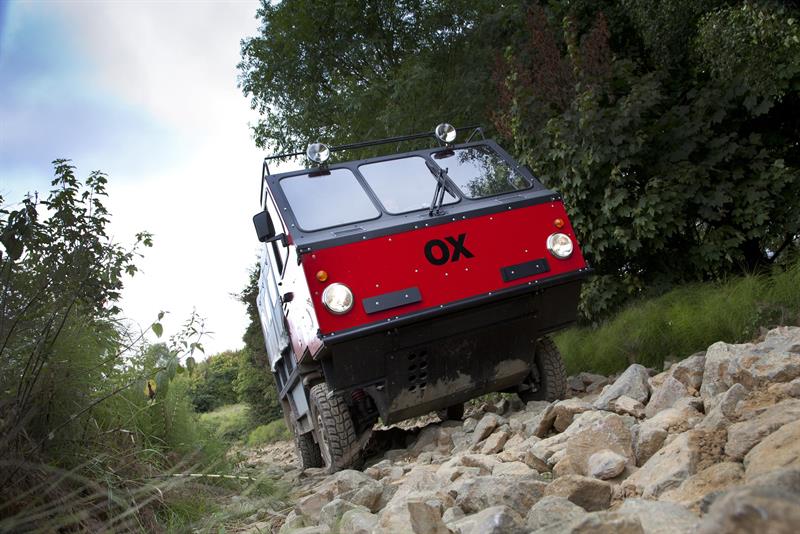Across the developing world, there is intense need for improved transport, for both everyday living as well as emergencies. The OX has been designed to tackle a host of transport challenges, and to undertake crucial daily tasks, such as collect drinking water and transporting grain, fertilizer or building materials.
Five years ago, Sir Torquil Norman founded the Global Vehicle Trust (GVT), to pursue his ambition to help people in the developing world by providing cost-effective mobility. The GVT subsequently briefed renowned automotive designer Professor Gordon Murray on a unique humanitarian programme to create a revolutionary lightweight truck.
The brief for the vehicle called for high ground clearance, excellent approach and departure angles, large wheel movement, a multi-purpose layout and a three-person cab. Prof Murray’s flat-pack design for the OX fundamentally changes the way a vehicle can be bought and transported, providing specific advantages to lead times and overall unit cost.
The overall vehicle length is 4.2m and yet it can carry a payload of 1900kg with a load volume of 7m3. Based on EU size guidelines, it can seat up to 13 people or carry eight 44-gallon drums or three Euro-pallets.
All-terrain ability is crucial for the developing world, and the OX has been engineered to perform as well as, or better than, a four-wheel drive vehicle across a range of surfaces, while offering durable mobility with two driven wheels.
It is also capable of being flat-packed within itself, enabling it to be transported more efficiently around the world. It takes three people less than six hours to create the flat pack in the UK prior to shipping, and six of these flat packs can be shipped within a 40ft high-cube container. Assembly labour is transferred to the importing country, where local professional companies will be employed to assemble and maintain the finished vehicles. Three skilled people can put an OX together in approximately 12 hours.
 “The OX design and prototyping programme is undoubtedly one of the most interesting and challenging I have undertaken during my 45 years of car design, including my years in F1,” said Prof Murray. “The added challenge of a flat-packed vehicle design over the already tough targets for cost, durability and weight saving made for a fascinating and stimulating journey from concept to prototype.”
“The OX design and prototyping programme is undoubtedly one of the most interesting and challenging I have undertaken during my 45 years of car design, including my years in F1,” said Prof Murray. “The added challenge of a flat-packed vehicle design over the already tough targets for cost, durability and weight saving made for a fascinating and stimulating journey from concept to prototype.”
Beyond its revolutionary packaging design and two-wheel-drive all-terrain ability, the OX is full of design innovations. For example, the tailgate does not merely contain the load in the back; it detaches completely from the OX and can be rotated lengthways to double as a loading ramp. The rear bench seat bases also have a dual purpose. The long ‘egg crate’ frames can be removed from the vehicle and used as ‘sand ladders’ under the wheels to help the OX traverse challenging soft ground.
Prof Murray added: “The most satisfying elements of the project for me are that the OX will make such a difference to so many people and that it has no competitor in any part of the world.”
The global launch of the OX aims to highlight the need for investment and support in order to progress the project to completion. The GVT believes that the OX project will attract interest from a range of potential backers.
Sir Torquil Norman said: “We believe that the OX has huge potential for charities, aid organisations and development programmes. My dream is to one day see an OX in every village in Africa.”





